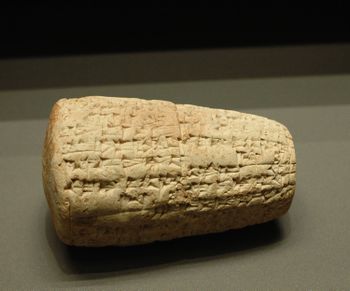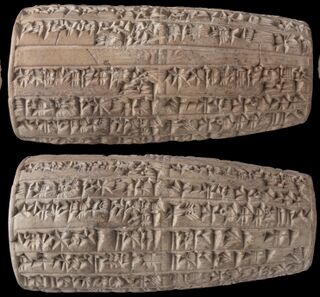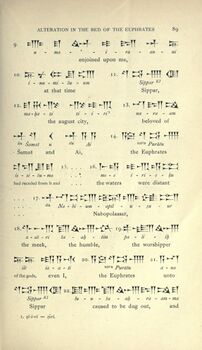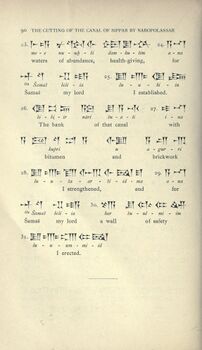سيبار
33°03′32″N 44°15′08″E / 33.058829°N 44.252153°E
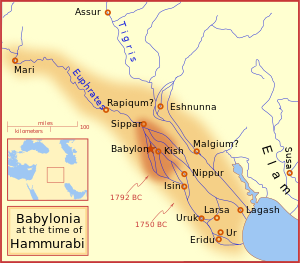
سيپـّار Sippar كلمة تعني باللغة الآشورية مدينة الطيور كانت مدينة سومرية قديمة، بابلية لاحقاً، تقع على الضفة الشرقية من الفرات حوالي 60 كيلومترَ شمال بابل.
أقسام المدينة
قسمت المدينة إلى جزئين سيبار لإله الشمس و سيبار لإلاهة أنونيت" بث تدعى مدينة سيبار في العهد القديم ب (سيفارفيم) الذي يلمّح إلى الإثنين من أجزاءِ المدينةِ بشكلها الثنائيِ.
إله المدينة في التاريخ
الإله الرئيسي للمدينة كانت إلهةَ "الشمسِ/شاماش" وأحد ملوك المدينة كان "إنميدورانكي" الذي قِيل أنه حَكمَ العديد من السَنوات قبل الطوفان.
الآثار

Tell Abu Habba, measuring over 1 square kilometer was first excavated by هرمز رسام between 1880 and 1881 for the British Museum in a dig that lasted 18 months. [2] Tens of thousands of tablets were recovered including the Tablet of Shamash in the Temple of Shamash/Utu. Most of the tablets were Neo-Babylonian. [3] [4] [5] The temple had been mentioned as early as the 18th year of Samsu-iluna of Babylon, who reported restoring "Ebabbar, the temple of Szamasz in Sippar", along with the city's ziggurat.
The tablets, which ended up in the British Museum, are being studied to this day.[6] As was often the case in the early days of archaeology, excavation records were not made, particularly find spots. This makes it difficult to tell which tablets came from Sippar-Amnanum as opposed to Sippar.[7] Other tablets from Sippar were bought on the open market during that time and ended up at places like the British Museum and the University of Pennsylvania.[8] [9] Since the site is relatively close to Baghdad, it was a popular target for illegal excavations.[10]
In 1894, Sippar was worked briefly by Jean-Vincent Scheil.[11] The tablets recovered, mainly Old Babylonian, went to the Istanbul Museum. In modern times, the site was worked by a Belgian team from 1972 to 1973. Iraqi archaeologists from the College of Arts at the University of Baghdad, led by Walid al-Jadir with Farouk al-Rawi, have excavated at Tell Abu Habbah from 1977 through the present in 24 seasons.[12][13] [14] After 2000, they were joined by the German Archaeological Institute. [15] [16] According to Professor Andrew George, a cuneiform tablet containing a portion of the Epic of Gilgamesh probably came from Sippar.[17]
قناة سيپار
- ترجمة النص المسماري
الهامش
- ^ Al-Gailani Werr, L., 1988. Studies in the chronology and regional style of Old Babylonian Cylinder Seals. Bibliotheca Mesopotamica, Volume 23.
- ^ [1] Hormuzd Rassam, Asshur and the Land of Nimrod: Being an Account of the Discoveries Made in the Ancient Ruins of Nineveh, Asshur, Sepharvaim, Calah, [etc]..., Curts & Jennings, 1897
- ^ Erle Leichty, Catalogue of the Babylonian Tablets in the British Museum: Tablets from Sippar 1, vol. 6, British Museum Publications, 1986, ISBN 0-7141-1115-5
- ^ Erie Leichty and A. K. Grayson, Catalogue of the Babylonian Tablets in the British Museum: Tablets from Sippar 2, vol. 7, British Museum Publications, 1987, ISBN 0-7141-1122-8
- ^ Erie Leichty et al., Catalogue of the Babylonian Tablets in the British Museum: Tablets from Sippar 3, vol. 8, British Museum Publications, 1988, ISBN 0-7141-1124-4
- ^ [2] Nebo-Sarsekim Cuneiform Tablet at Archaeology.org
- ^ Anne Goddeeris, Economy and Society in Northern Babylonia in the Early Old Babylonian Period, Peeters Publishers, 2002, ISBN 90-429-1123-9
- ^ [3] Hermann Ranke, Babylonian Legal and Business Documents from the Time of the First Dynasty of Babylon; Chiefly from Sippar, University of Pennsylvania, 1906 (reprinted by Nabu Press ISBN 1-144-69277-6)
- ^ Karel Van Lerberghe, Old Babylonian legal and administrative texts from Philadelphia, Leuven : Departement Oriëntalistiek, 1986, ISBN 90-6831-063-1
- ^ E. A. Budge, By Nile and Tigris: A Narrative of Journeys in Egypt and Mesopotamia on Behalf of the British Museum Between the Years 1886 and 1913, John Murray, 1920
- ^ V. Scheil, Une Saison de fouilles a Sippar, Le Caire, 1902
- ^ Lamia al-Gailani and Walid al-Jadir, Seal Impressions from Sippar, Sumer, vol. 37, pp. 129-144, 1981
- ^ F. N. H. Al-Rawi and Stephanie Dalley, Old Babylonian texts from private houses at Abu Habbah ancient Sippir : Baghdad University Excavations, Nabu Publications, 2000, ISBN 1-897750-07-2
- ^ W. al-Jadir and Z. Rajib, Archaeological Results from the Eighth Season at Sippar, Sumer, vol. 46, pp. 69-90, 1990
- ^ Abdulillah Fadhil et al., Ausgrabungen in Sippar (Tell Abu Habbah). Vorbericht über die Grabungsergebnisse der 24. Kampagne 2002, in: Baghdader Mitteilungen (BaM) 36, pp. 157-224, 2005
- ^ Abdulillah Fadhil et. el., Sippar - Results of prospecting 2004/24, in: Sumer, A journal of archaeology in Iraq and the Arab world, vol. LII, no. 1&2, pp. 294-357, 2004
- ^ George, Andrew R., trans. & edit. (2003). The Babylonian Gilgamesh Epic: Critical Edition and Cuneiform Texts. England: Oxford University Press. ISBN 0-19-814922-0. p.172
المصادر
- "It is usually assumed that the Hippareni refers to Sippar (Ptolemy's Sippara), but even that requires proof, since the change of ‘s’ to ‘h’ is strange." —R. D. Barnett (1963). "Xenophon and the Wall of Media". The Journal of Hellenic Studies 83: 14. doi:10.2307/628451.
